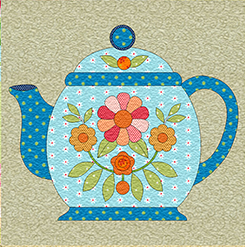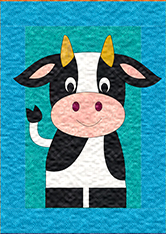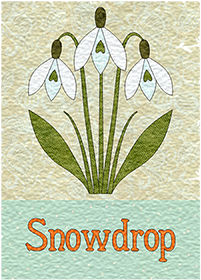![]() Are you ready to embark on a whimsical journey of creativity and self-expression? Discover the fascinating world of hand appliqué, where fabric becomes a canvas and your imagination knows no bounds. In this blog post, we will explore five different hand appliqué techniques: Needle-turn, Blanket Stitch with Fusible Interfacing, Reverse, Freezer Paper, and Back-Basting. Each technique has its own charm and offers a unique way to bring your quilt designs to life. So, grab your needle and thread as we unravel the secrets of this captivating art form.
Are you ready to embark on a whimsical journey of creativity and self-expression? Discover the fascinating world of hand appliqué, where fabric becomes a canvas and your imagination knows no bounds. In this blog post, we will explore five different hand appliqué techniques: Needle-turn, Blanket Stitch with Fusible Interfacing, Reverse, Freezer Paper, and Back-Basting. Each technique has its own charm and offers a unique way to bring your quilt designs to life. So, grab your needle and thread as we unravel the secrets of this captivating art form.
 The Needle-Turn Technique: Shaping with Stitches
The Needle-Turn Technique: Shaping with Stitches
With this technique the raw edge of the applique pieces are turned under as the piece is being appliqued to the fabric base. The needle is used to turn the seam allowance under during the stitching process. This technique offers precise control and allows for seamless integration of appliqué motifs onto your quilt blocks.
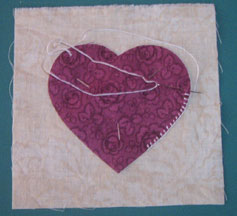 Blanket Stitch with Fusible Interfacing: A Fusion of Strength and Elegance
Blanket Stitch with Fusible Interfacing: A Fusion of Strength and Elegance
This technique combines the stability of fusible interfacing with the decorative touch of the blanket stitch. By fusing the interfacing to the appliqué fabric, you’ll ensure longevity and stability while adding a charming decorative edge with the blanket stitch. It’s the best of both worlds!
 Reverse Appliqué: Revealing Layers of Beauty
Reverse Appliqué: Revealing Layers of Beauty
Sometimes, it’s the element of surprise that truly captivates the eye. Reverse appliqué allows you to create stunning visual effects by revealing contrasting layers of fabric. Start by layering your fabrics, then carefully cut away the top layer to expose the hidden beauty beneath. Whether you’re aiming for intricate designs or bold shapes, reverse appliqué will add depth and intrigue to your quilt projects.
 Freezer Paper Appliqué: Precision at Your Fingertips
Freezer Paper Appliqué: Precision at Your Fingertips
Precision is the key to perfection, and freezer paper appliqué offers just that. By tracing your appliqué design onto freezer paper, you can create precise templates that easily adhere to the fabric. This technique provides stability and allows for accurate placement. Simply iron the freezer paper template onto the fabric, stitch around it, and remove the paper once your appliqué is secure. Get ready to achieve flawlessness in your quilt designs.
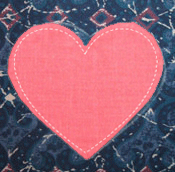 Back-Basting Appliqué: Layered Stitching Mastery
Back-Basting Appliqué: Layered Stitching Mastery
Back-basting appliqué is a technique that involves layering the appliqué fabric, marking the design on the back, and using basting stitches to secure the pieces in place. The basting stitches are then removed as you needle-turn the seam allowance under, to applique the shape to the background.
FAQ: Addressing Your Hand Appliqué Questions
Q: Which hand appliqué technique is best for beginners? A: For beginners, the freezer paper appliqué technique offers simplicity and accuracy. It provides stability and makes it easier to achieve precise shapes.
Q: Can I mix different hand appliqué techniques in one project? A: Absolutely! Mixing techniques can add variety and interest to your quilts. Experiment with different methods to achieve the desired effects.
Q: How do I choose the right fabric for hand appliqué? A: Opt for fabrics with a tight weave and minimal fraying. Quilting cotton is a popular choice, but you can also explore other fabrics like batiks or lightweight wools, depending on your project.
Q: What type of thread should I use for hand appliqué? A: Fine threads like 50wt cotton or silk threads work well for hand appliqué. Choose colors that blend harmoniously with your fabric choices.
Q: How do I secure my appliqué pieces before stitching? A: You can use pins, basting stitches, or temporary fabric glue to hold your appliqué pieces in place. Find a method that works best for you.
Engage Your Creativity: What Will You Create?
Are you ready to let your creativity soar? Imagine the possibilities that hand appliqué holds. What design or motif captures your imagination? Will you bring nature to life with delicate flowers or create a whimsical world with playful animals? Share your thoughts and let your creativity shine!
 I am a self-learner. I taught myself to sew and to quilt. And I taught myself how to draw. I love to dye my own fabrics, am a fanatic of free-motion quilting, and dabble with mixed media. I am a quilt designer and teacher, and design and publish my own line of quilt patterns. With this blog I would like to share the bits and pieces of my life.
I am a self-learner. I taught myself to sew and to quilt. And I taught myself how to draw. I love to dye my own fabrics, am a fanatic of free-motion quilting, and dabble with mixed media. I am a quilt designer and teacher, and design and publish my own line of quilt patterns. With this blog I would like to share the bits and pieces of my life. 